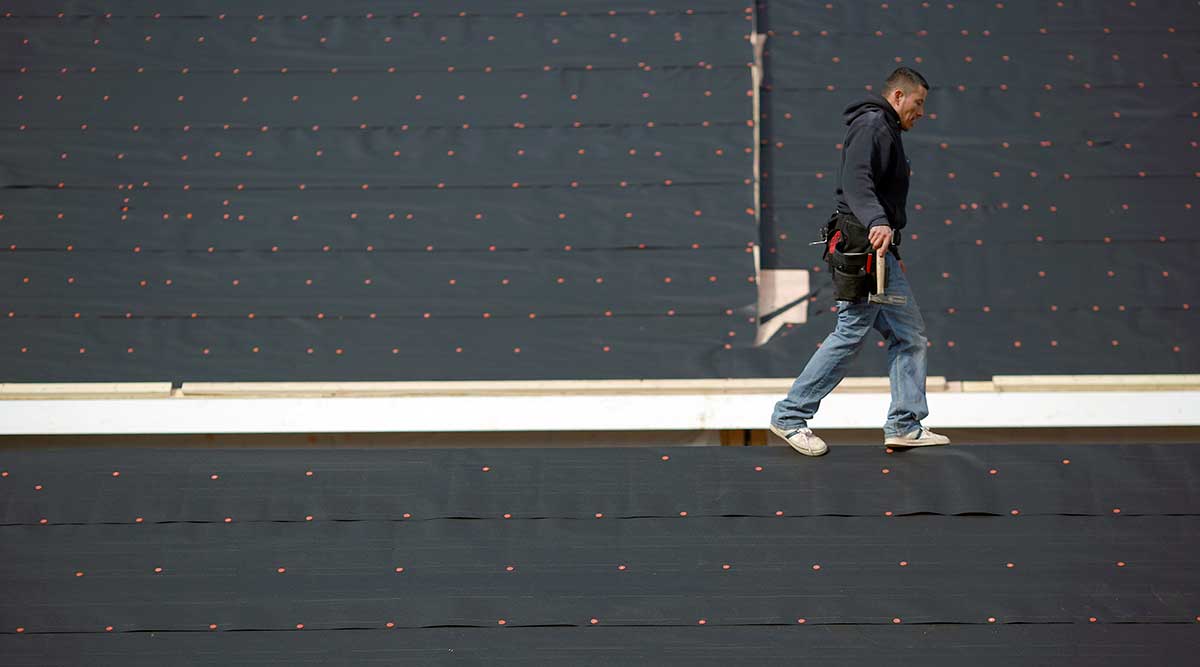Housing Starts Rise 2% in March

Starts of new homes climbed 2% to a 926,000 annualized rate from a revised 908,000 in February that was the weakest in more than a year, figures from the Commerce Department showed April 16.
The March reading was lower than the most pessimistic projection in a Bloomberg News survey of economists, indicating builders were slow to take advantage of favorable weather and underscoring a temperate housing recovery.
The smaller-than-projected gain in starts highlights the challenges builders face, including difficulty acquiring land for new projects, stricter loan standards and limited wage growth. At the same time, an improving labor market and rising sales in the three months through February have rekindled homebuilder sentiment approaching the spring selling season.
“Housing’s not going to come back immediately — that doesn’t mean it’s not going to come back,” said Lewis Alexander, chief economist at Nomura Securities International Inc., who forecast a pace of 950,000 housing starts. “I continue to believe the fundamentals for housing are supportive.”
The median estimate of economists surveyed by Bloomberg was for a 1.04 million rate of starts. Estimates of 80 economists ranged from 950,000 to 1.12 million after a previously reported 897,000 in February.
Homebuilding in March was held back by slowdowns in the West and South. The smaller-than-estimated gain nationally also reflected the weakest pace of construction of multifamily homes since September 2013.
Building permits declined 5.7% in March to a 1.04 million annualized rate. They were projected to fall to 1.08 million.
Applications for the construction of single-family projects exceeded the number of starts, signaling some room for a pickup in construction.
While construction of single-family houses increased 4.4% to a 618,000 rate in March, it followed a 15.2% plunge a month earlier. Work on multifamily homes, such as apartment buildings, declined 2.5% to a 308,000 rate. Data on these projects can be volatile.
By region, construction declined 19.3% in the West to a 201,000 rate, which was the weakest since May. Starts fell 3.5% in the South to a 498,000 pace, the slowest in four months.
Construction rebounded in the rest of the country after inclement winter weather in February stymied builders. Starts in the Northeast jumped a record 115% and were up 31.3% in the Midwest. Even with the gains, starts in the two regions were just the strongest since January.
Recent data showed homebuilders are more confident about the outlook for housing as prospective buyers returned to the market and sales climbed. The National Association of Home Builders/Wells Fargo sentiment gauge advanced to 56, the highest since January, from 52 in the previous month, the Washington-based group reported April 15.
Increased household formation has given builders including Los Angeles-based KB Home cause for optimism. As millennials — young adults born after 1980 — enter their home-buying years, demand for homes should climb, CEO Jeffrey Mezger said on a March 20 earnings call.
“The housing recovery is gaining traction, with plenty of runway before we reach normalized volume levels,” Mezger said. More broadly, “mortgage rates and affordability remain favorable, resale inventory levels are low, price appreciation continues and the share of home sales that are distressed has declined.”
Continued improvement in the labor market will be needed to sustain that trend. While payrolls rose by a less-than-forecast 126,000 workers in March, the gain followed a 12-month streak of increases of 200,000 or more.
Nonetheless, wage growth has lagged in the recovery. Hourly pay increased 2.1% in March from a year earlier, in line with the average since the expansion began in June 2009.
Historically low borrowing costs may make limited income gains a little more palatable for prospective homebuyers. The average rate on a 30-year fixed mortgage fell to a nine-week low of 3.66% in period ended April 9, according to data from Freddie Mac in McLean, Virginia.

